A young boy accompanies a mysterious heron into a fantastical realm shared by the living and the dead to search for his missing stepmother. A film by Hayao Miyazaki.
君たちはどう生きるか
the BOY and the HERON
宮﨑駿
Hayao Miyazaki
(2023)
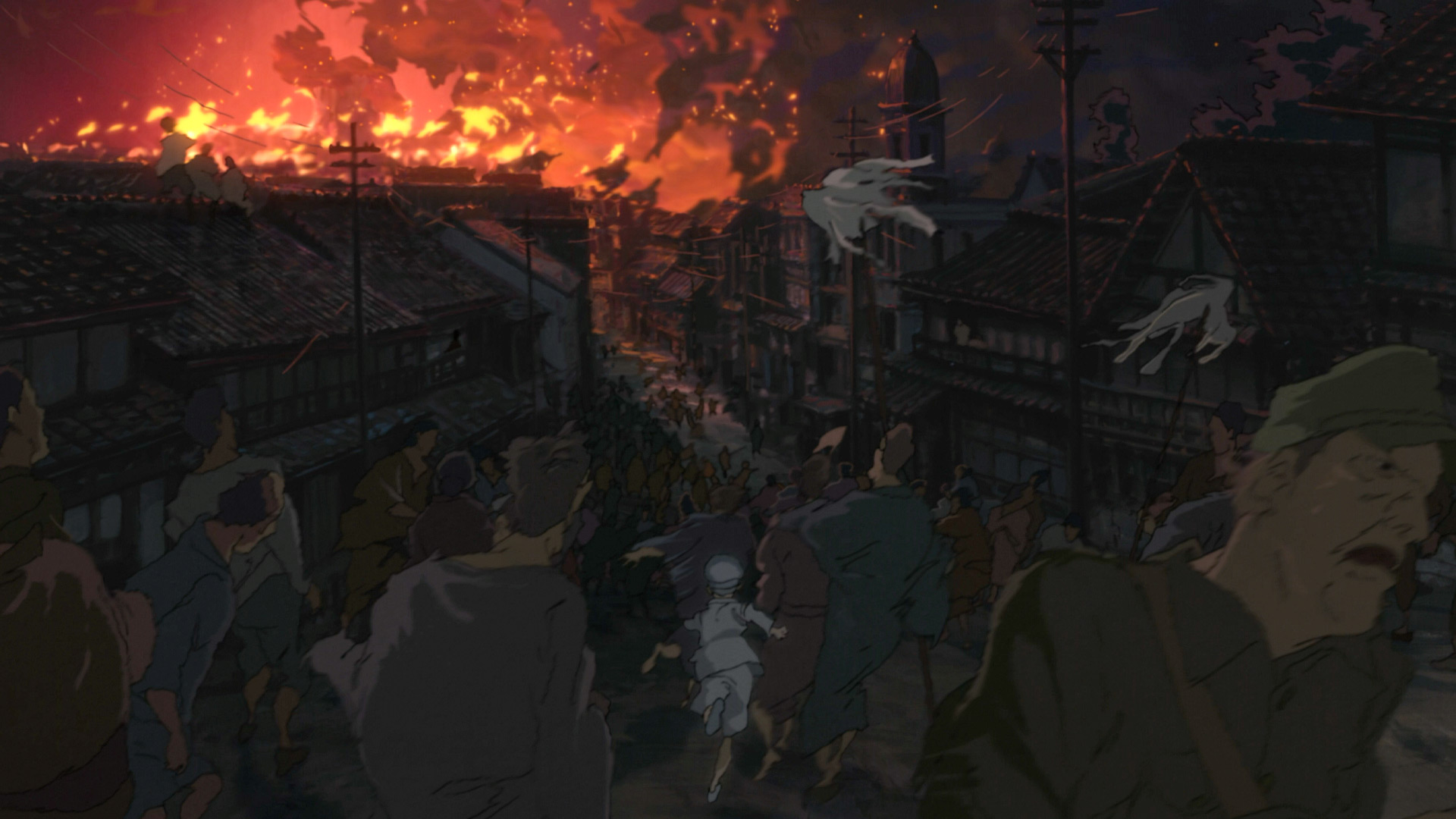
Three years into the Pacific War in Tokyo, a fire breaks out and engulfs the hospital where Mahito’s mother, Hisako (ヒサコ), is staying. Mahito Maki (牧眞人) races to the hospital through the city where its citizens flee in chaos. Mahito loses his mother in the fire, presumed dead, although her body is never found or shown.
The Pacific War was the theater of World War II that was fought in eastern Asia, the Pacific Ocean, the Indian Ocean, and Oceania. It began on 7 December 1941 when Japan simultaneously attacked American military bases in Hawaii, the Philippines, and other Allied territories in the Pacific. The most significant event was the Bombing of Tokyo on the night of 9 – 10 March 1945. Incendiary bombs caused a firestorm that destroyed a large portion of the city. Estimates suggest over 100,000 people died, and millions were left homeless.

A year later, his father Shoichi marries Hisako’s sister Natsuko and decides to relocate to a rural estate belonging to Hisako’s family. Upon arriving at the train station, Mahito and his father wait outside for Natsuko to pick them up. Mahito can’t help but notice how much Natsuko looks exactly like his late mother. Shoichi, however, decides to visit his new air munitions factory first and takes a separate bus. Natsuko and Mahito travel on to the estate together. During the trip, Natsuko reveals to Mahito that she is pregnant with Shoichi’s child.
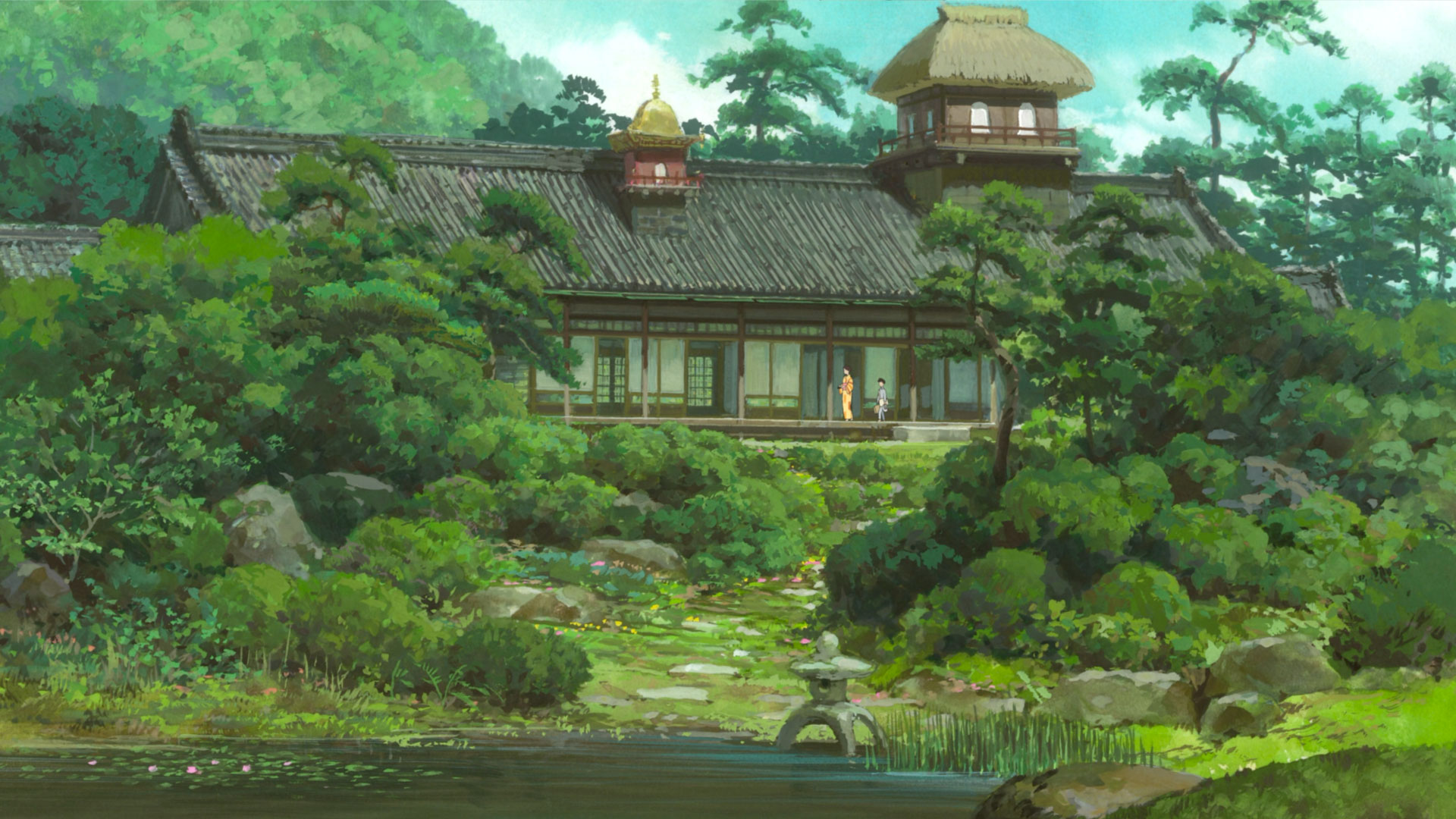
Entering the estate; a mysterious gray heron swings past the hallway. Natsuko tells Mahito that it’s their local heron; however, she remarks that it’s quite unusual since the herons typically stay in the gardens outside. She teases that the heron must be giving Mahito a warm welcome.
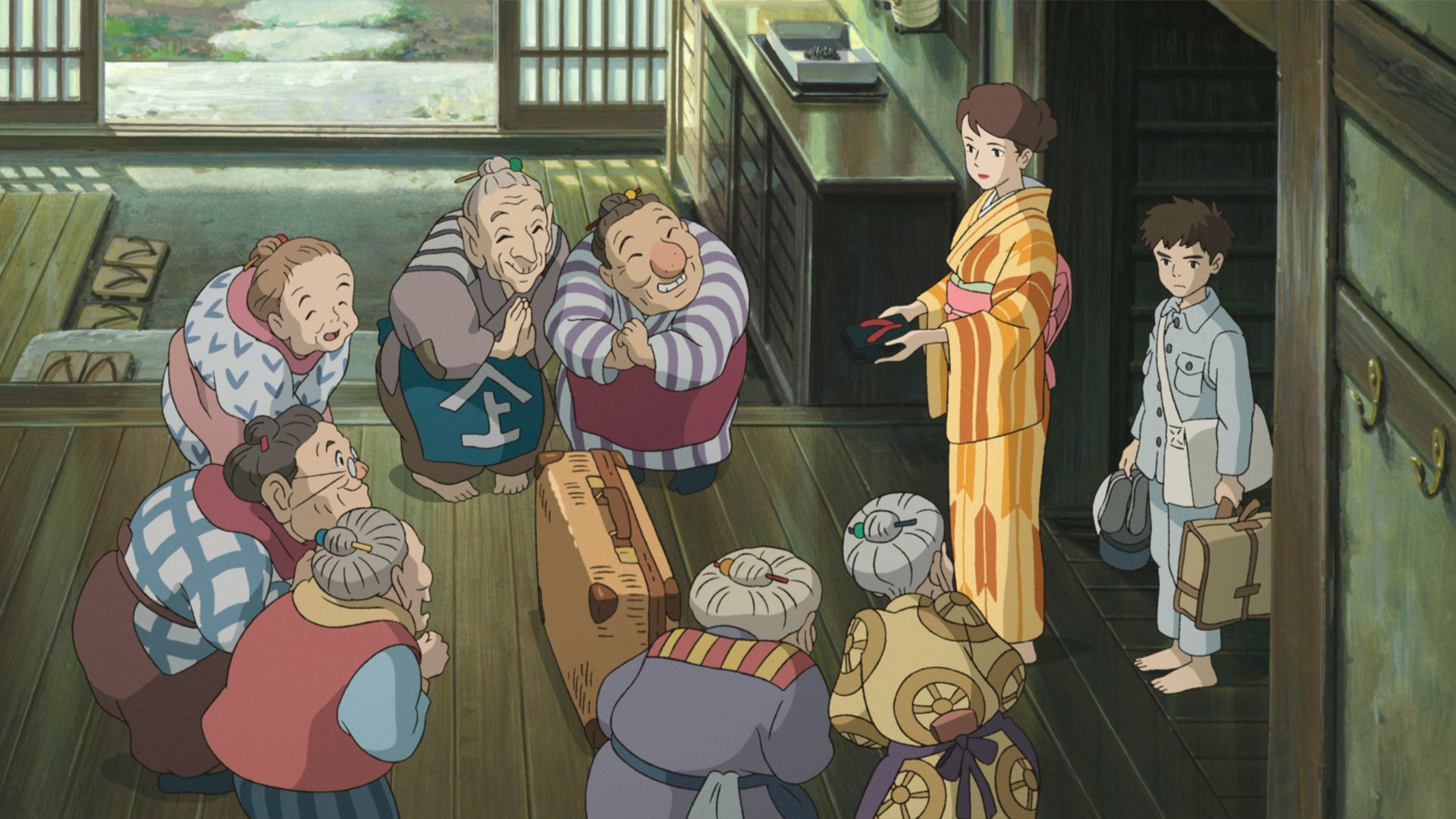
Natsuko introduces Mahito to seven elderly maids who have been serving in the estate for a very long time. The maids seem to be quite intrigued by the several food cans that Shoichi brought in his luggage from Tokyo. Natsuko then takes Mahito to his room, which she has prepared for him. Exhausted from the long trip, Mahito eventually falls asleep. A mysterious gray heron appears by the window before flying away. Reeling from the loss of his beloved mother, Mahito dreams of that fateful night when the hospital was engulfed by flames along with his mother.
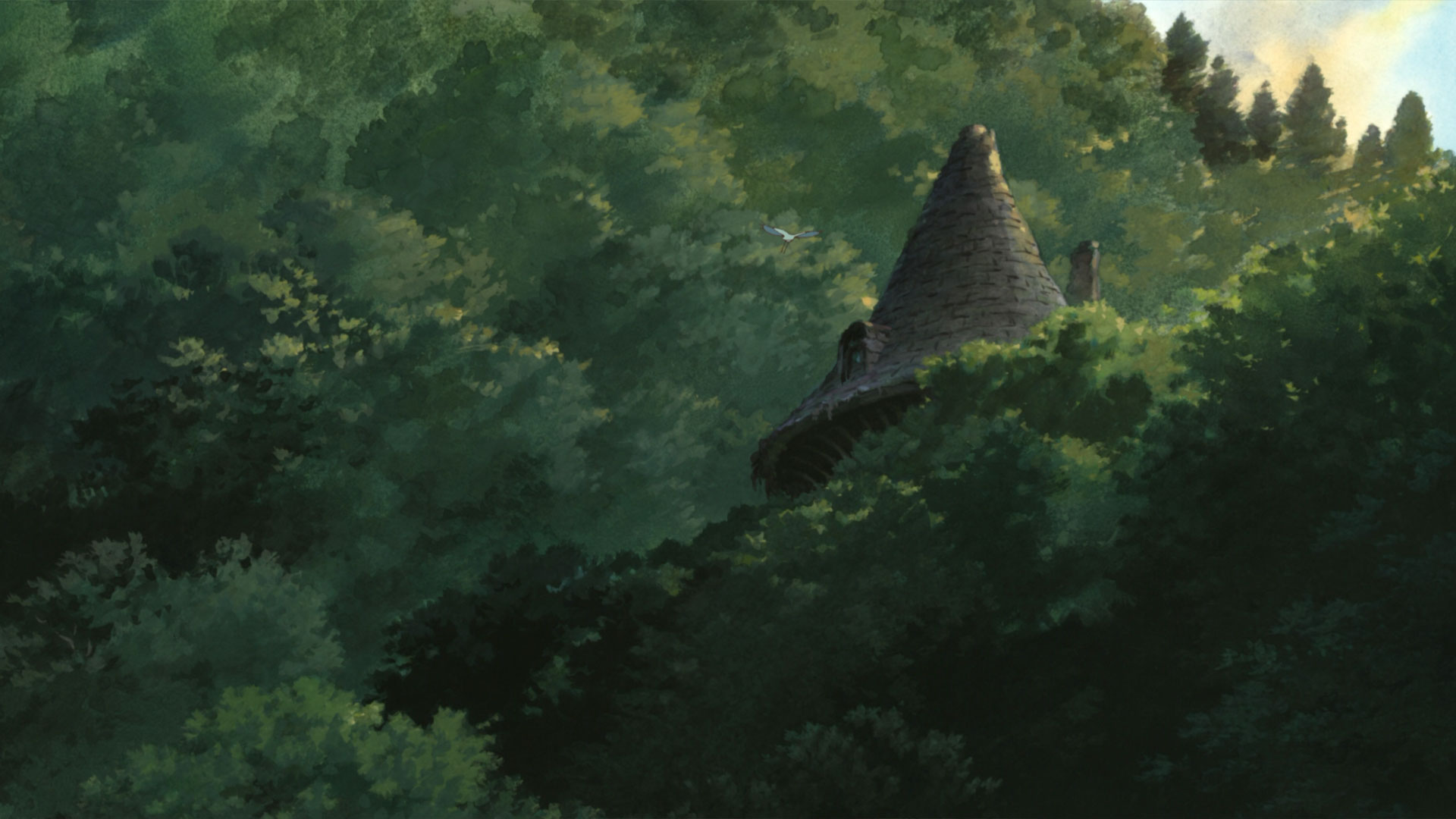
Mahito wakes up and steps out of the house. He follows a pathway leading to a large pond where he finds the mysterious gray heron. As Mahito gets closer, the heron takes off and flies away. Mahito watches as the heron lands on the top of a nearby tower before entering the tower through a tiny opening. Curious, Mahito walks through the tall grass near the forest. There, he finds an abandoned tower where he believes the heron is hiding.
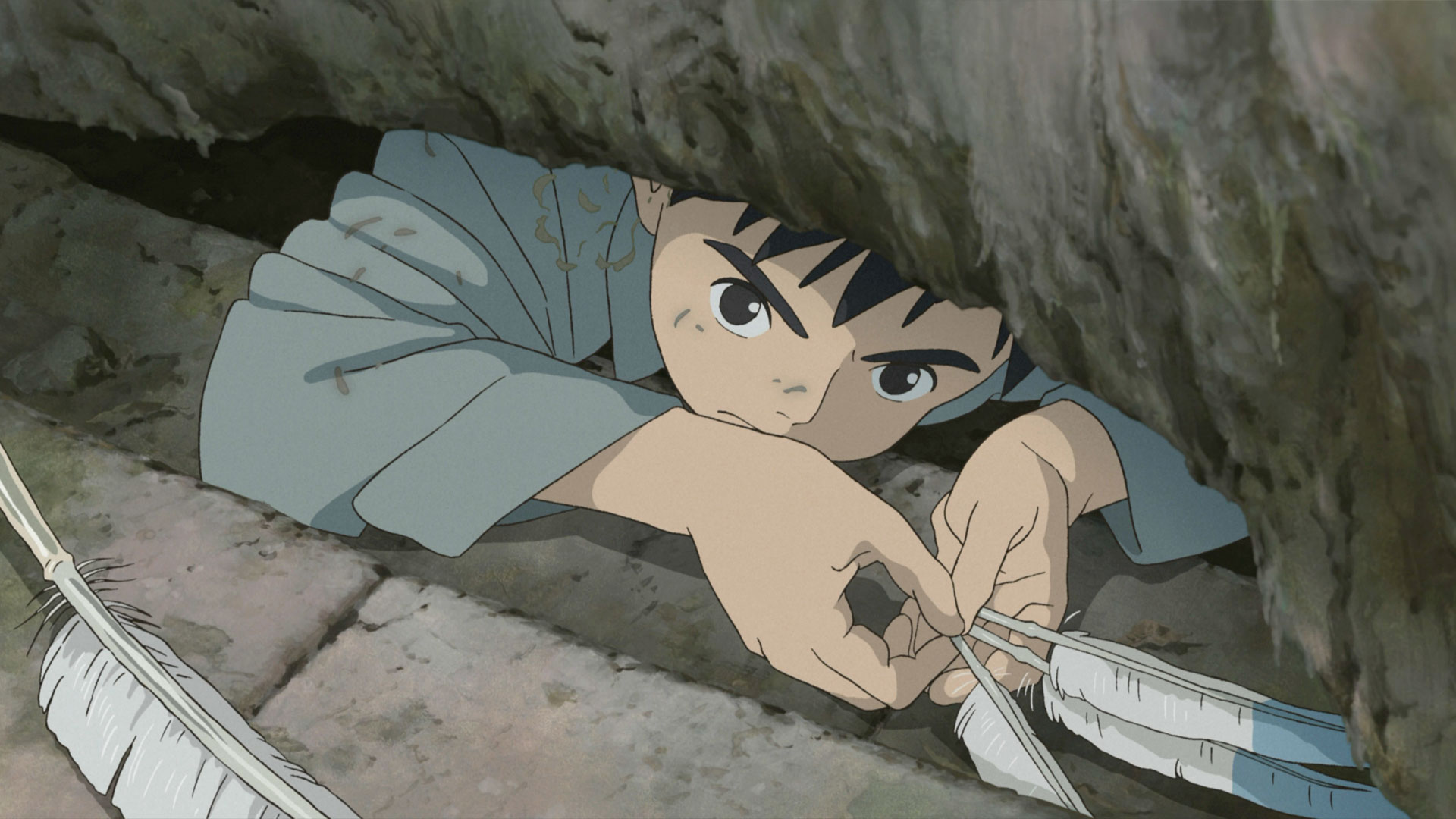
Meanwhile, Natsuko discovers that Mahito is missing from his room. As nightfall approaches, worry sets in, and she gathers all her elderly maids to search for Mahito. Mahito hears them calling his name, but he chooses to ignore them. He discovers a small entrance covered by rubble where he finds several gray heron feathers. As he moves forward through the entrance, he finds a staircase, but the path is too narrow for him to pass through. He grabs a handful of feathers and returns to the entrance where two worried maids are looking for him. Once Mahito leaves the abandoned tower, he notices that the feathers mysteriously disappear.
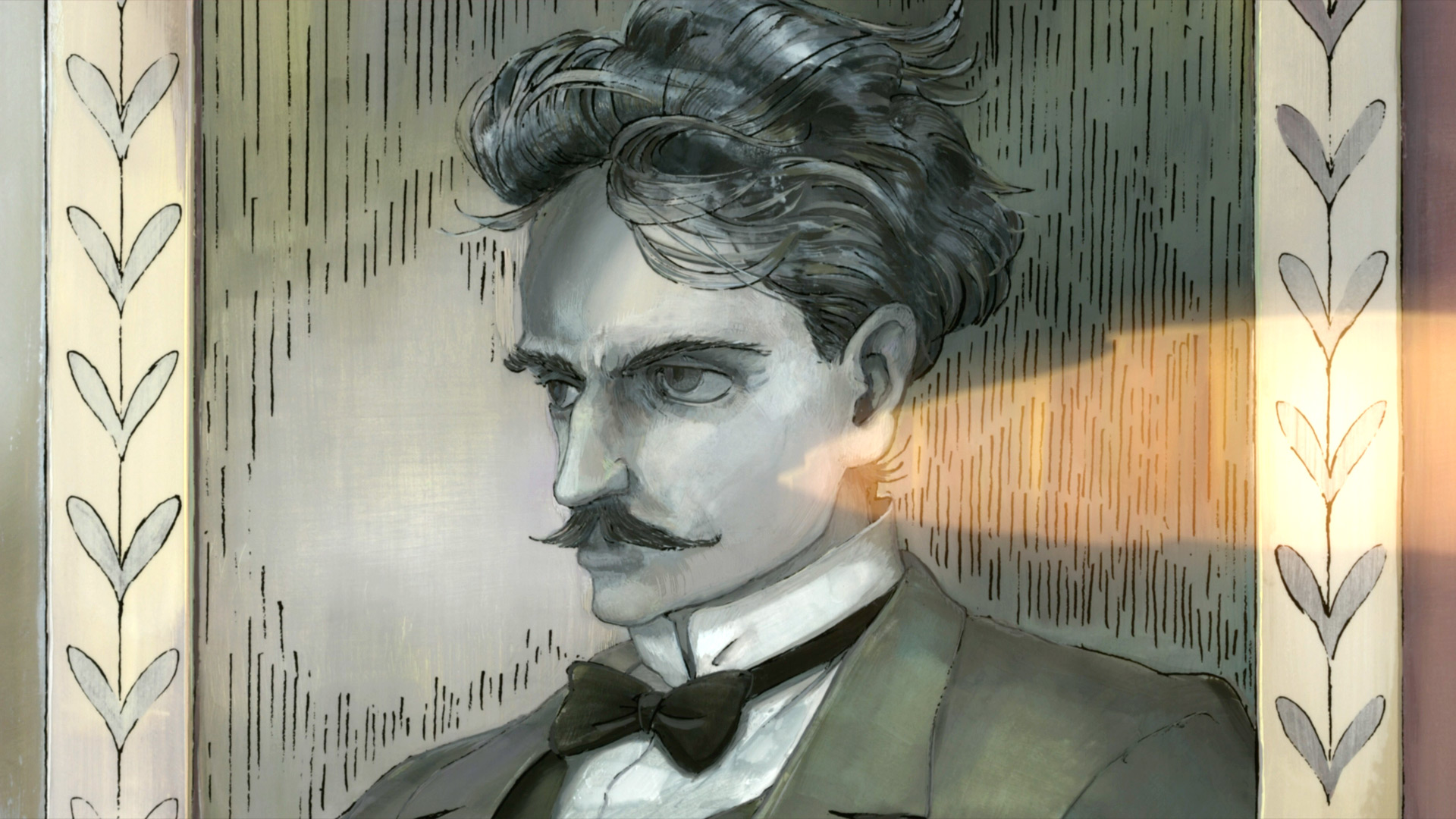
Back at the house, Natsuko explains that she’s waiting for Mahito to settle in before telling him about the tower. She tells Mahito that his granduncle built the tower. He was highly educated and very intelligent. Some people believed him to be insane, and one day he vanished without a trace. Later, a large flood caused the passage connecting the tower to the main house to collapse.
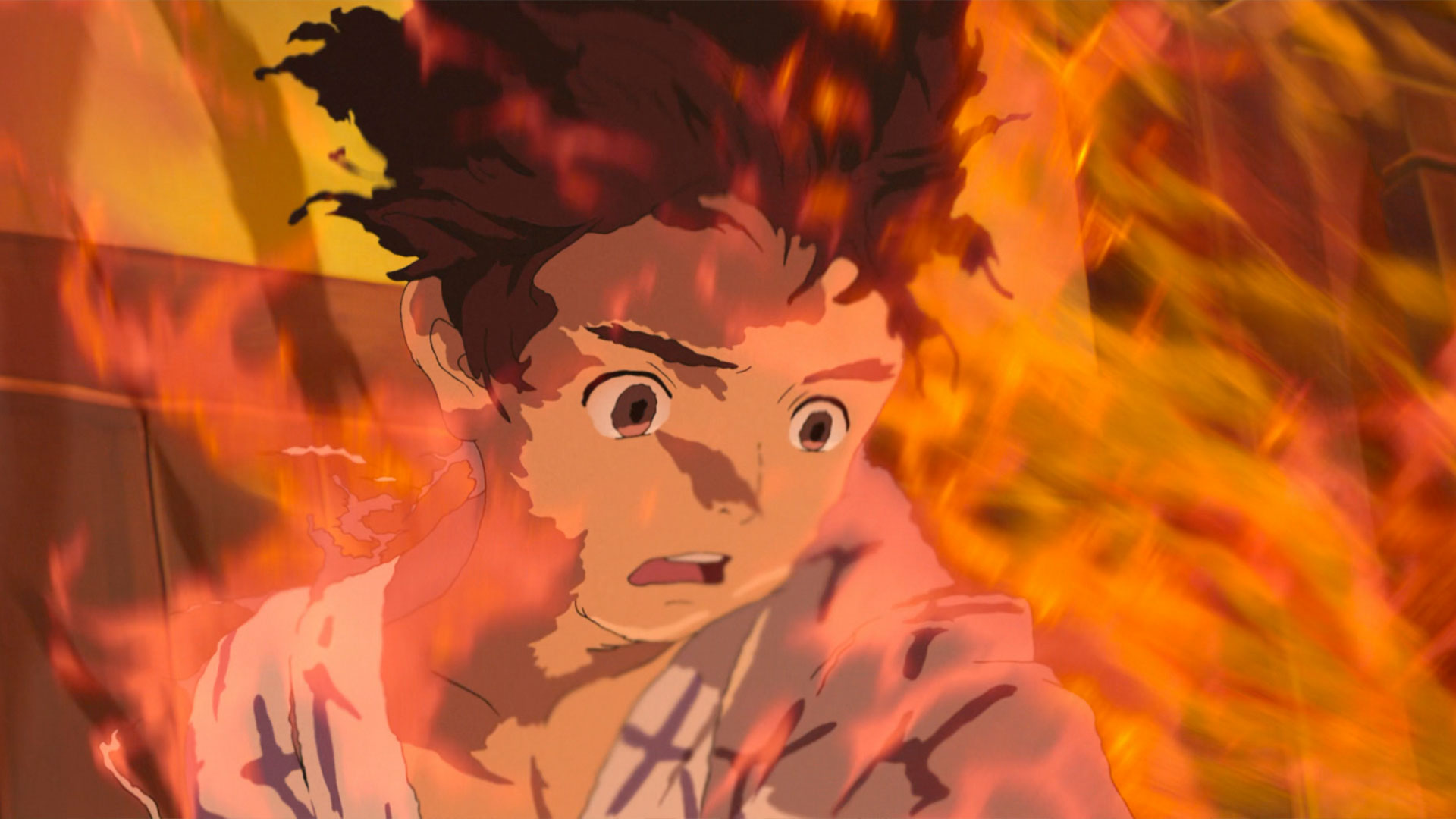
The collapse revealed a dangerous maze of tunnels. Natsuko’s grandfather decided to seal the entrance to prevent anyone from wandering in. She insists that Mahito stay away from the tower. That night, Mahito has a fiery vision. In the flames, his mother’s voice cries out, begging him to save her.
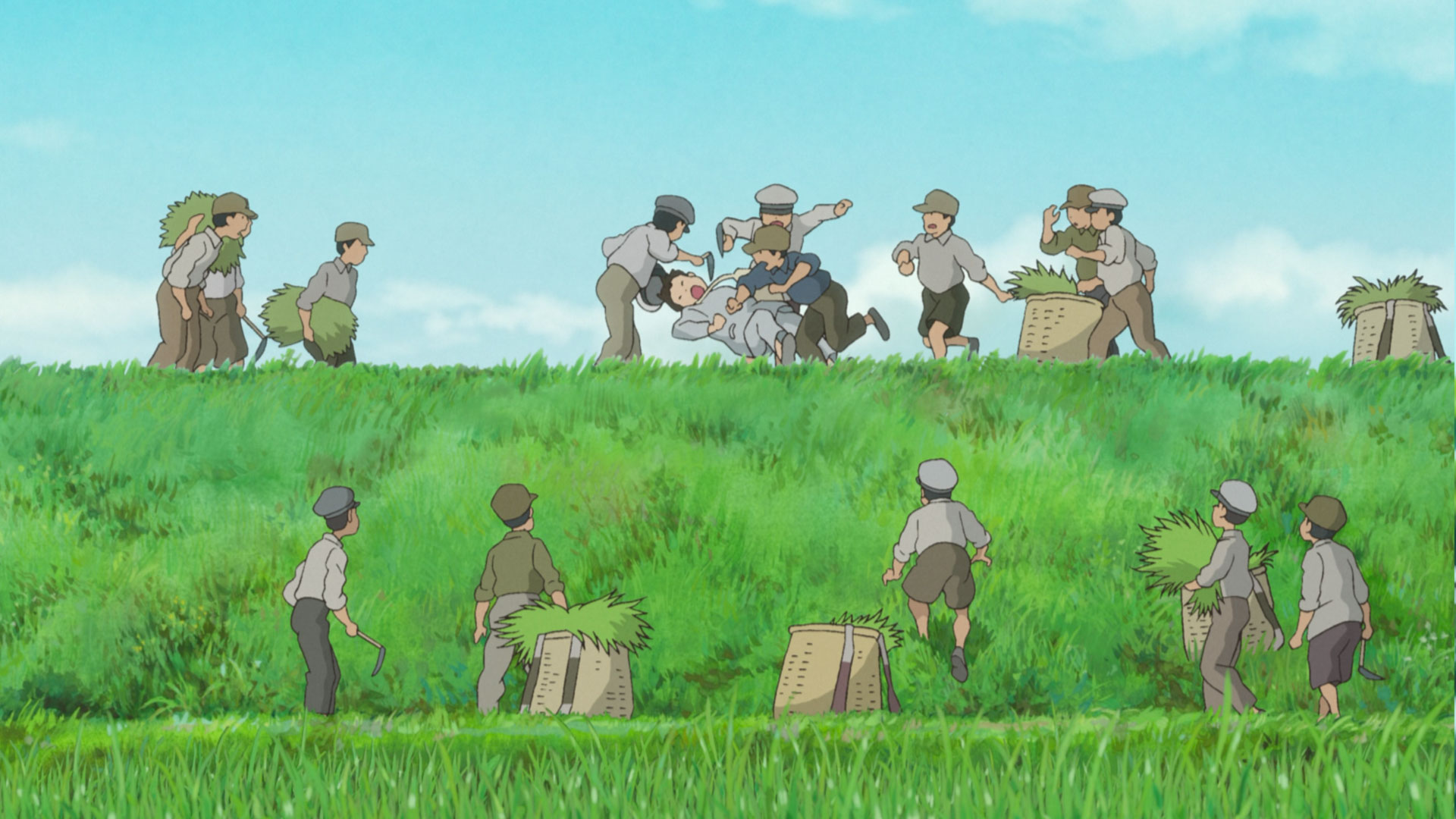
The next day, Mahito goes to school and has a fight with a local student who picks on him. Strangely, on his walk home, Mahito picks up a rock and deliberately injures himself, causing Shoichi to be furious and seek justice for his son. However, when Shoichi asks who hurt him, Mahito answers that he fell. Nevertheless, Shoichi doesn’t believe his son’s words. Instead, Shoichi believes Mahito is afraid to tell him the truth.
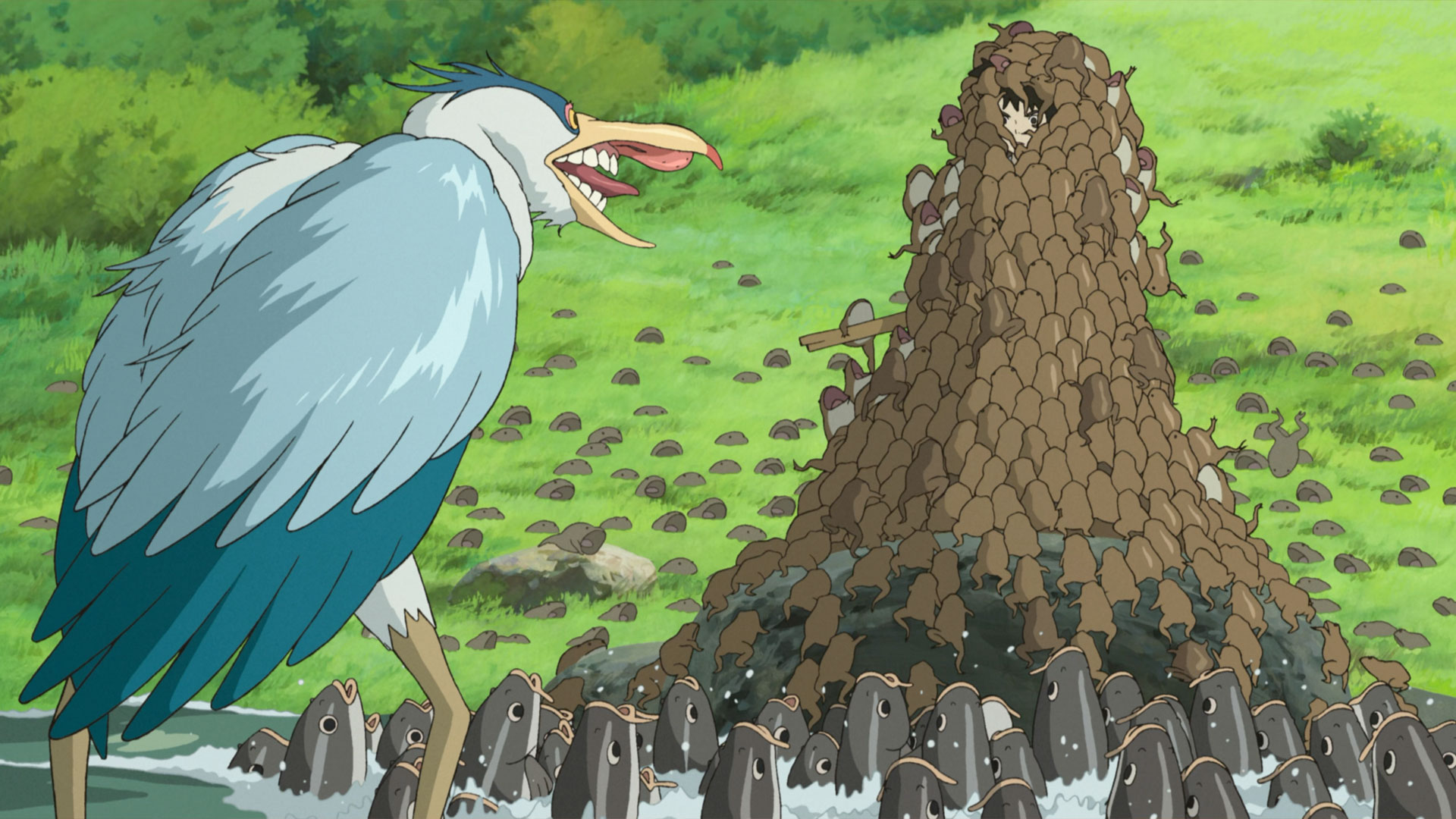
The gray heron reappears again, this time able to speak. It speaks the same words that Hisako cried out in Mahito’s vision. Later, Mahito confronts the heron at the pond. The heron reveals itself to be an enchanted heron, offering to guide Mahito to his mother, claiming that Hisako is waiting for him to rescue her. Startled, Mahito is slowly swarmed by a wave of toads. But he is saved by Natsuko’s arrow.
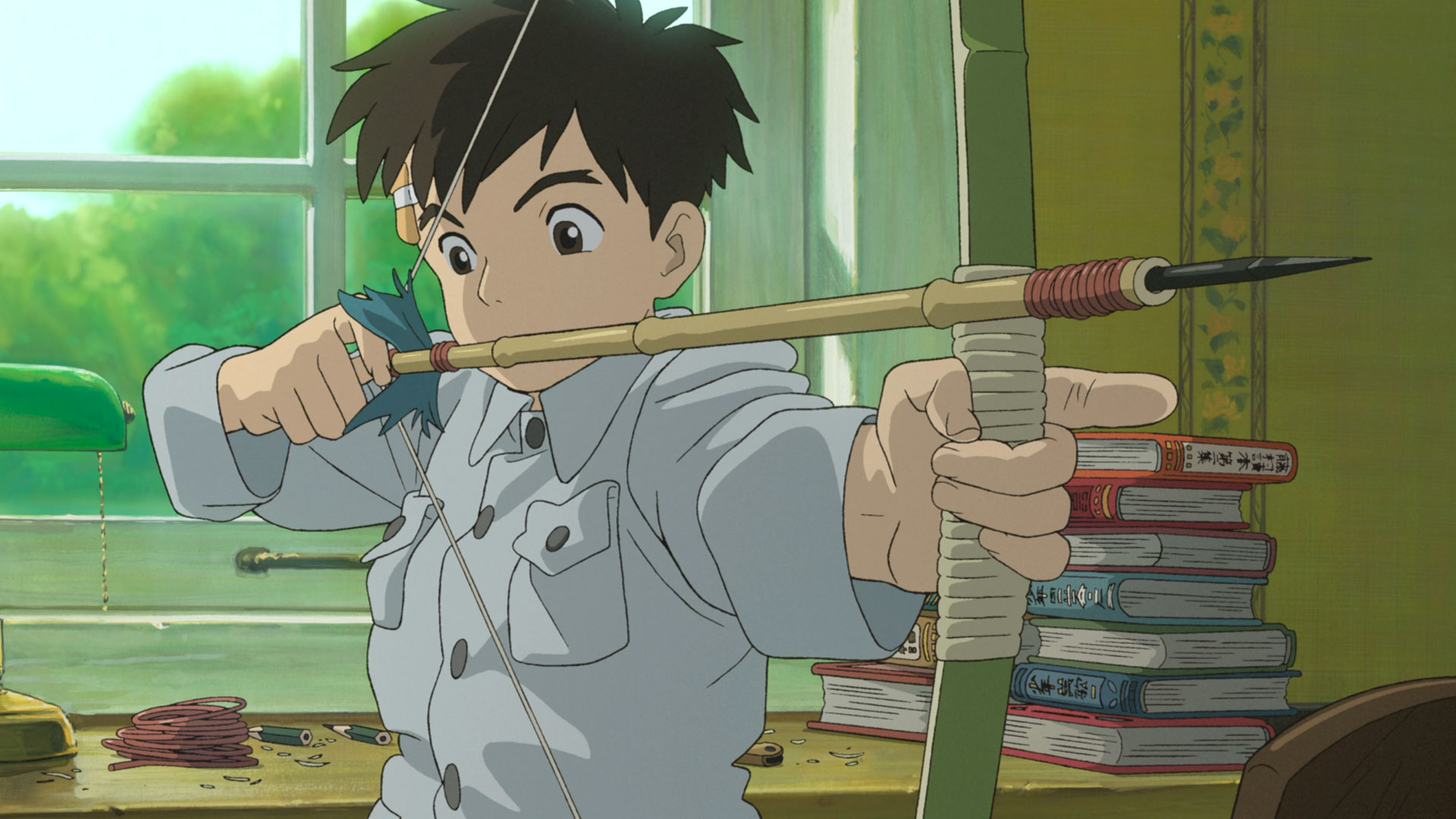
Mahito crafts an arrow using feathers from the enchanted heron and discovers that the arrow also becomes enchanted and is able to fly to the target by itself. Mahito notices Natsuko acting strangely as she is seen walking into the nearby forest. However, Mahito chooses to ignore Natsuko again. Later that afternoon, Mahito learns from an elderly maid, Kiriko (キリコ), that Natsuko is missing. Mahito tells Kiriko that he saw Natsuko near the forest earlier, and despite Kiriko assuring him that Natsuko wouldn’t go into the forest, he decides to venture through it to find her.
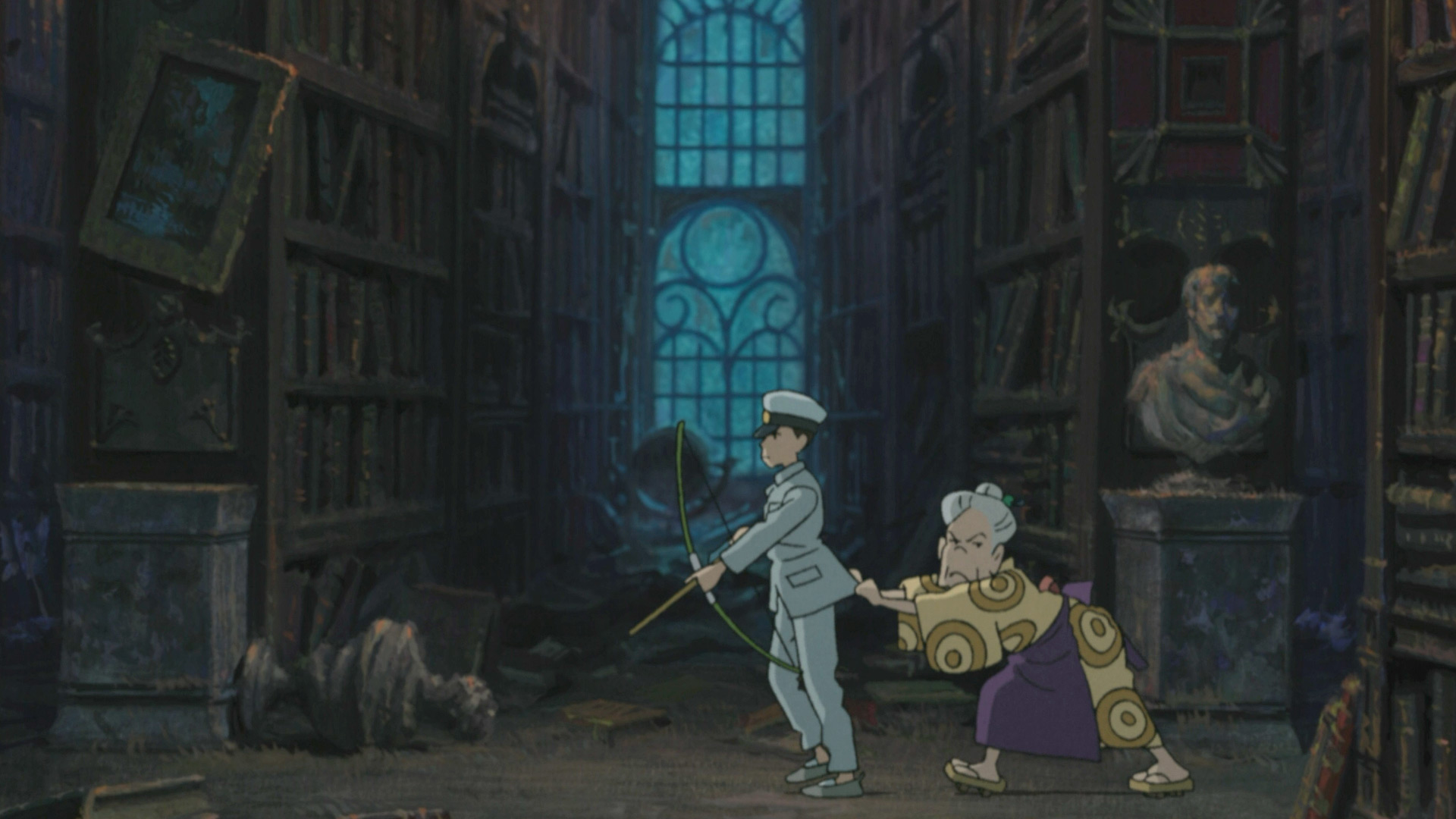
As Mahito and Kiriko follow a path through the forest, it leads them to the other side of the abandoned tower. Upon entering the tower, the gate suddenly falls down, blocking them from leaving. The enchanted heron reappears and leads Mahito and Kiriko to a central hall where Hisako lies waiting.
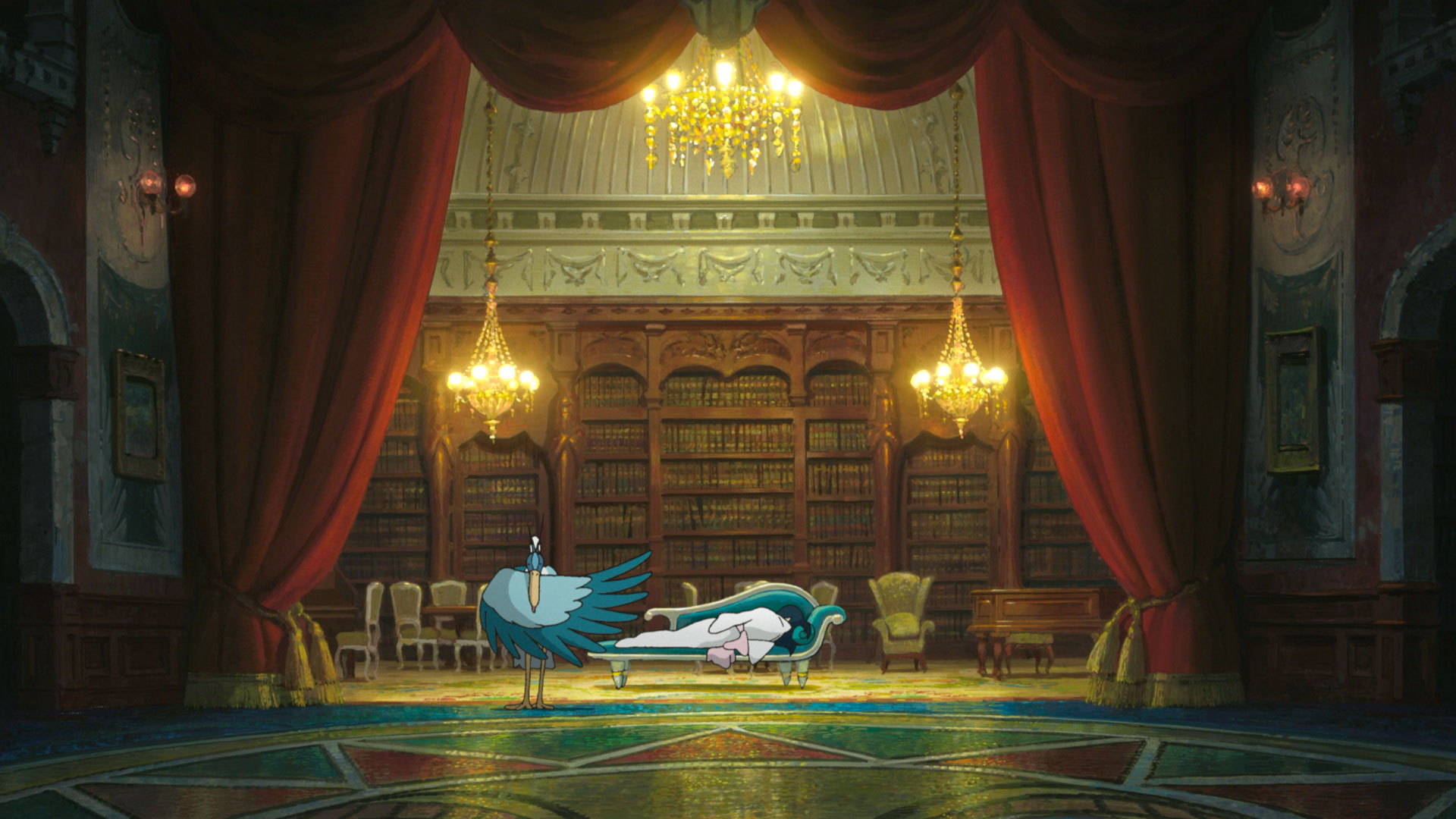
Despite suspecting a trap, Mahito inches closer to investigate, a sliver of hope clinging to the possibility that the woman on the couch might be his mother. His hope shatters as the watery imitation dissolves at his touch, revealing the heron’s trickery. Infuriated, Mahito fires his enchanted arrow at the heron.
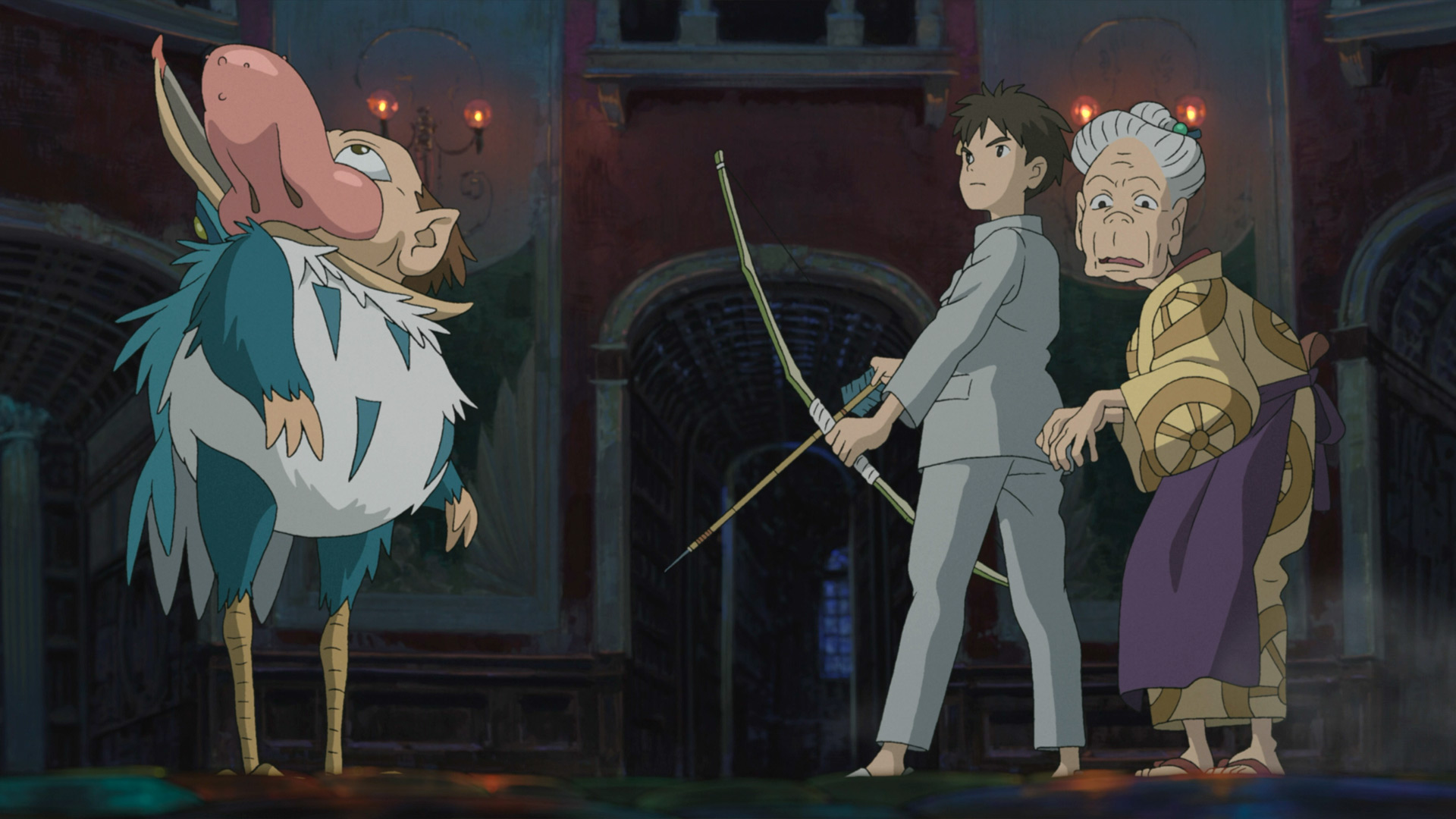
The arrow pierces the heron’s beak, and he transforms into a flightless creature – Heron Man – losing all his magic power to transform back. Mahito threatens to shoot again if Heron Man refuses to take him to Natsuko. Just then, the Master of the Tower appears on the top floor, commanding Heron Man to guide Mahito and Kiriko. Suddenly, all three of them sink into the floor.
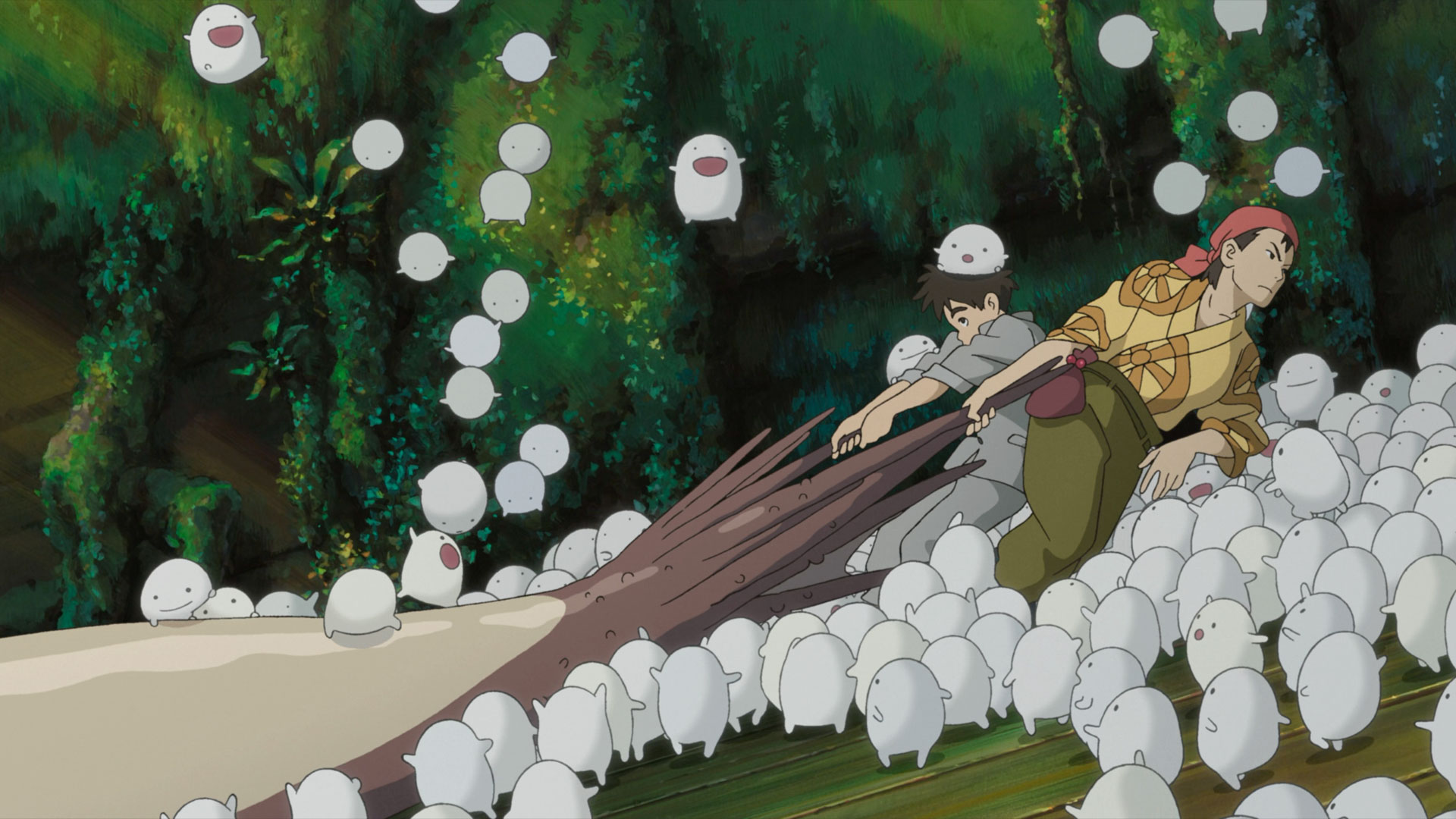
Mahito finds himself on an island surrounded by a vast ocean teeming with pelicans. A passing fisherwoman rescues him. In return, Mahito helps her navigate the ocean and catch a giant fish. The fisherwoman takes Mahito and the giant fish back to her home in an abandoned, gigantic ship where Mahito assists her in preparing food for bubble-like spirits called Warawara (ワラワラ).
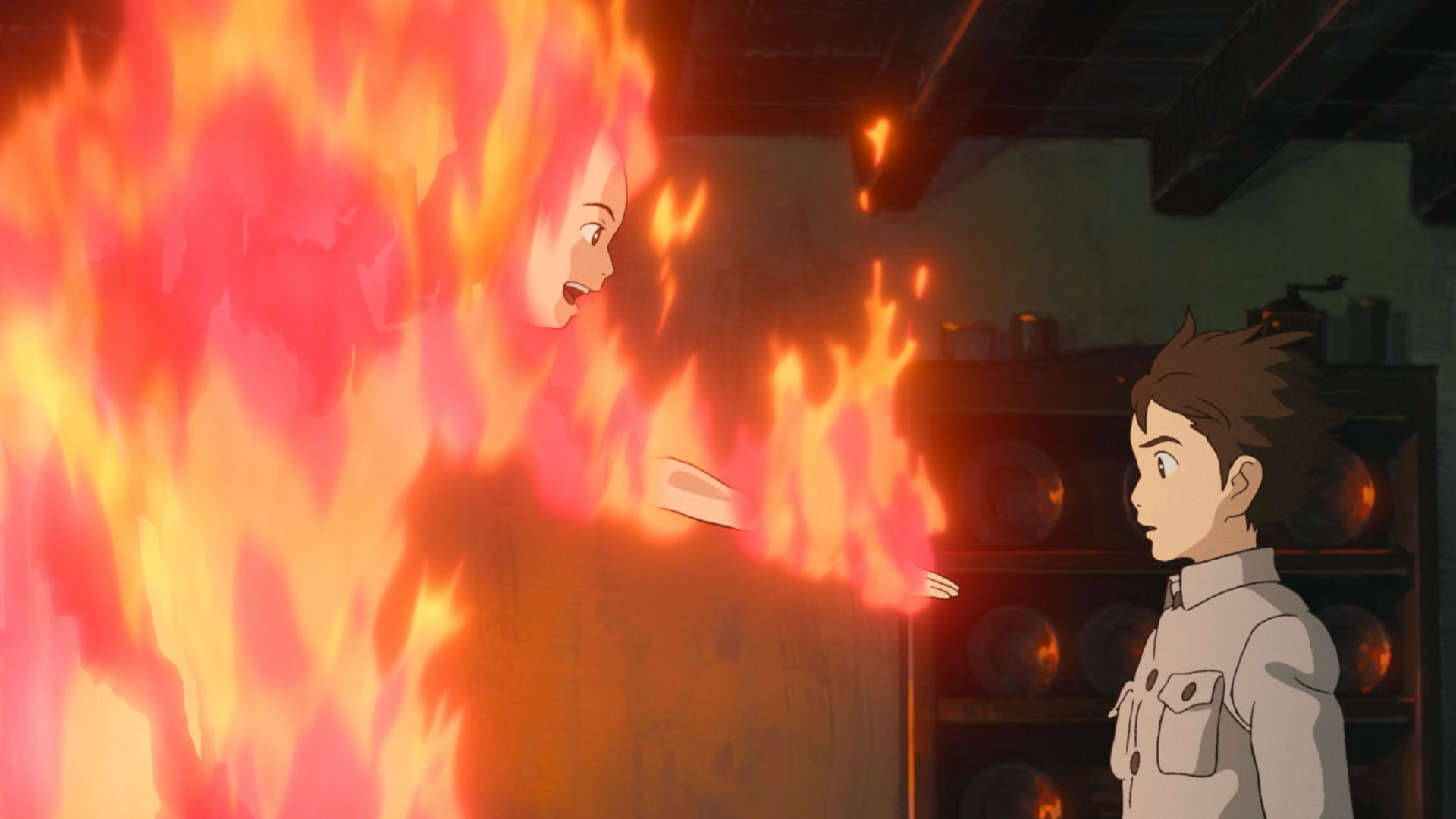
While we wonder about the fate of the elderly maid Kiriko, Mahito makes a startling discovery: the fisherwoman is a younger version of Kiriko who nurtures Warawara so they can be reborn in the human world. However, the Warawara are targeted by a flock of malicious pelicans starving due to food scarcity in the ocean, forcing them to eat Warawara to survive. The Warawara are protected by a mysterious young woman named Himi, who kills the pelicans with her magical flames. It is later revealed that Mahito is a direct descendant of the tower’s master, who desires him as his successor.
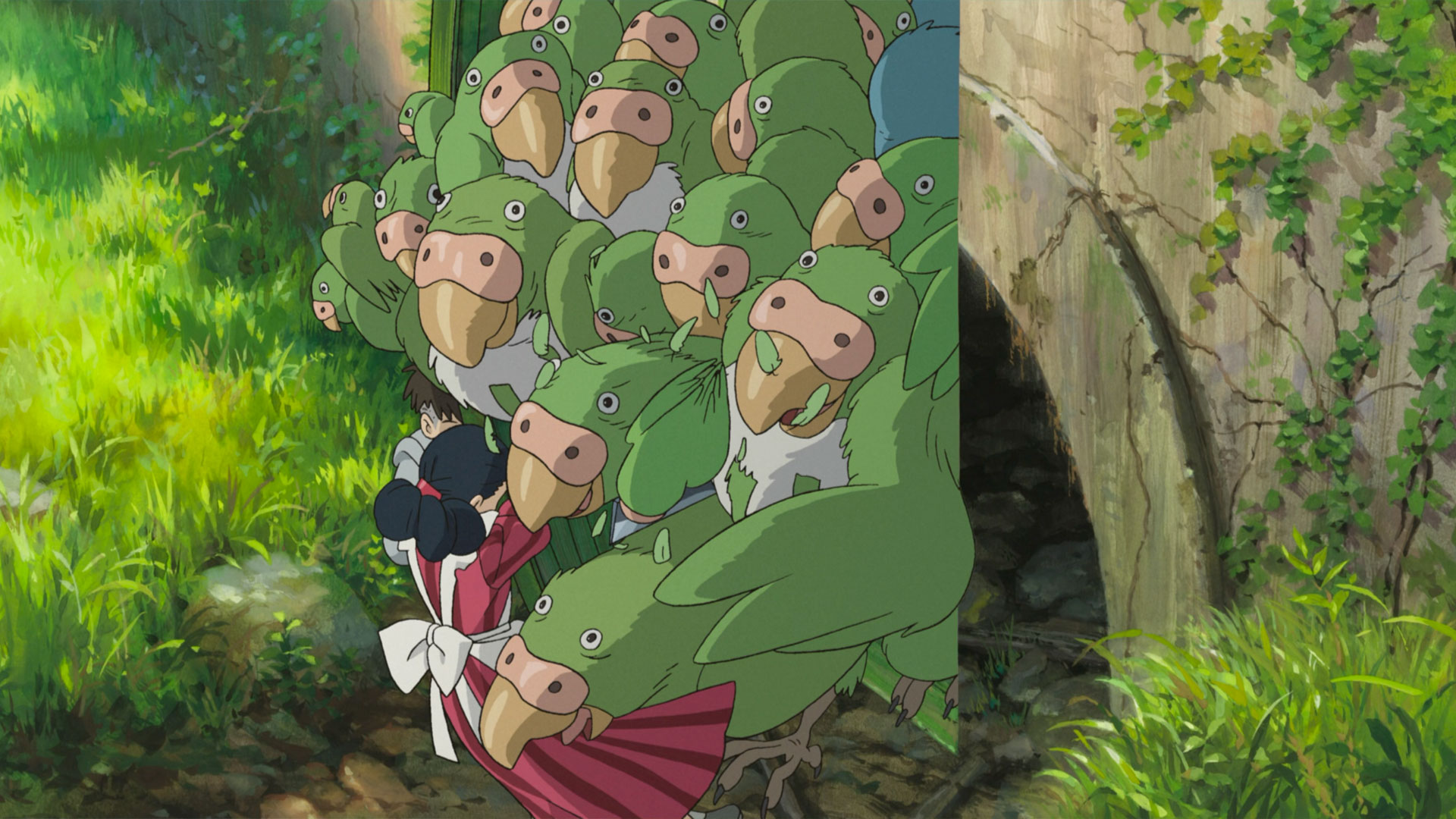
Written and directed by legendary Japanese filmmaker Hayao Miyazaki (宮崎駿), 君たちはどう生きるか (How Do You Live? / The Boy and the Heron) is likely his most ambitious and also his most confusing anime. While the film boasts mesmerizing visuals, unique to the Studio Ghibli style, accompanied by a beautiful score composed by Miyazaki’s long-time collaborator Joe Hisaishi (久石譲), it is also filled with bits and pieces of symbols and metaphors that come together in a rather unconventional storytelling approach.
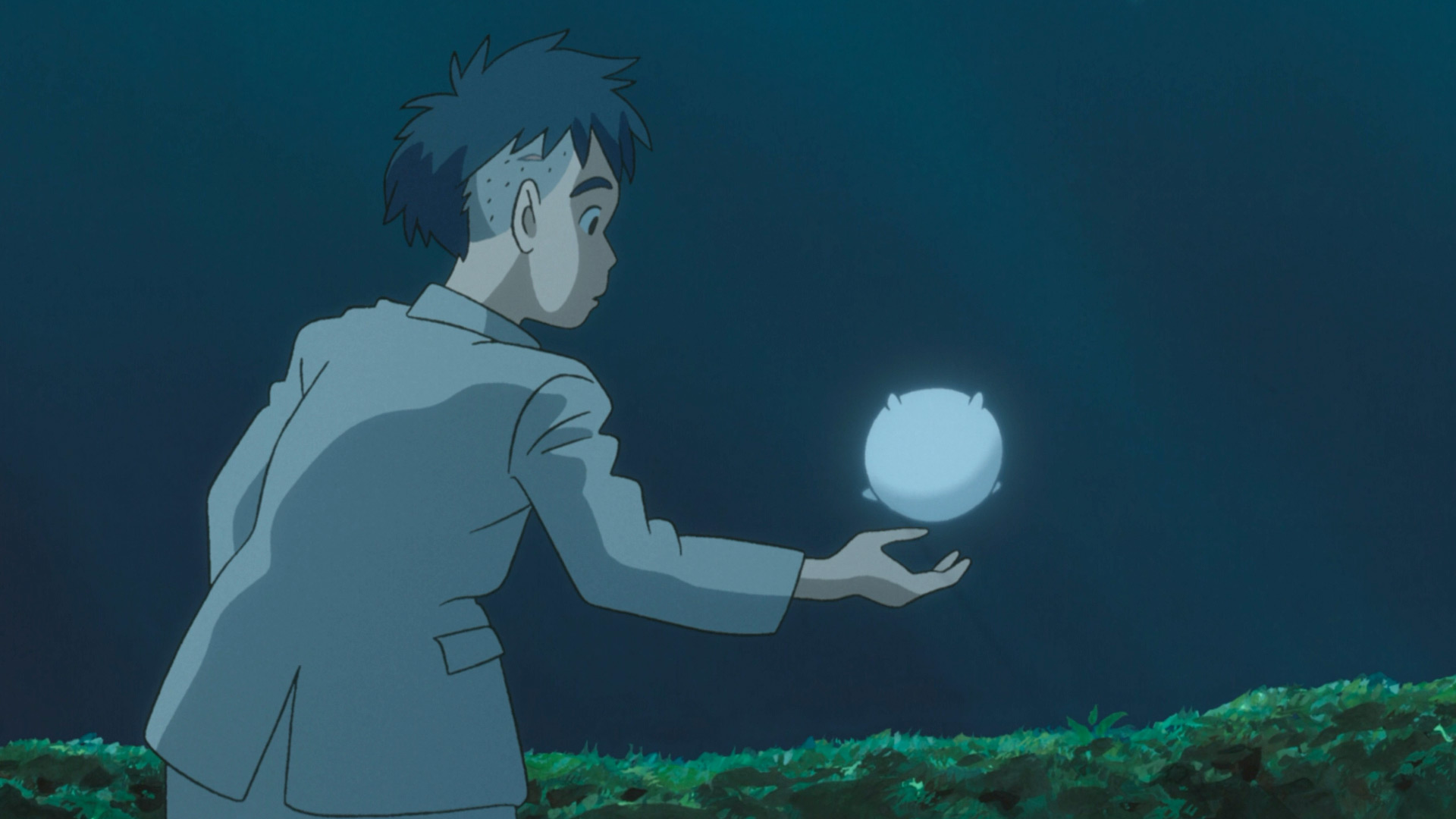
君たちはどう生きるか tells the story of a young boy who recently lost his beloved mother and isn’t ready to move on. On the other hand, his father quickly finds new love in the boy’s aunt, his late wife’s sister. He marries her and expects another child.
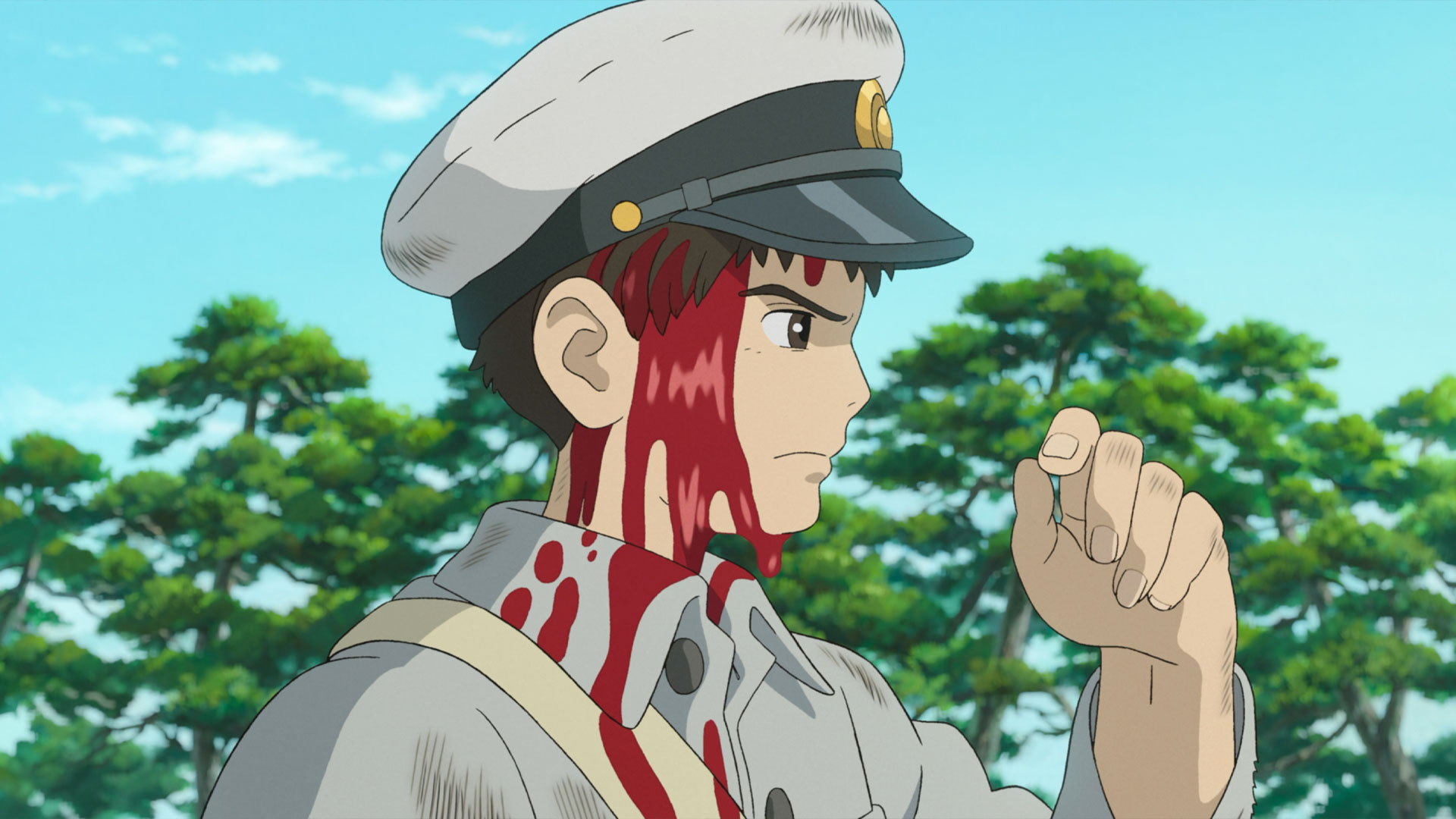
The problem is we can’t be sure what’s going on inside the grieving boy’s head. He displays almost no emotions and doesn’t seem to care about the people around him. Are we supposed to care about this character? The film doesn’t quite give us a reason to. He acts recklessly and exhibits signs of potential mental illness. In one scene, he deliberately injures his head with a rock, and blood exaggeratedly oozes out of his wound like a river. He could have potentially died from blood loss. But what is this scene trying to tell us? How does hurting himself benefit him or the narrative in any way? It’s mind-boggling!
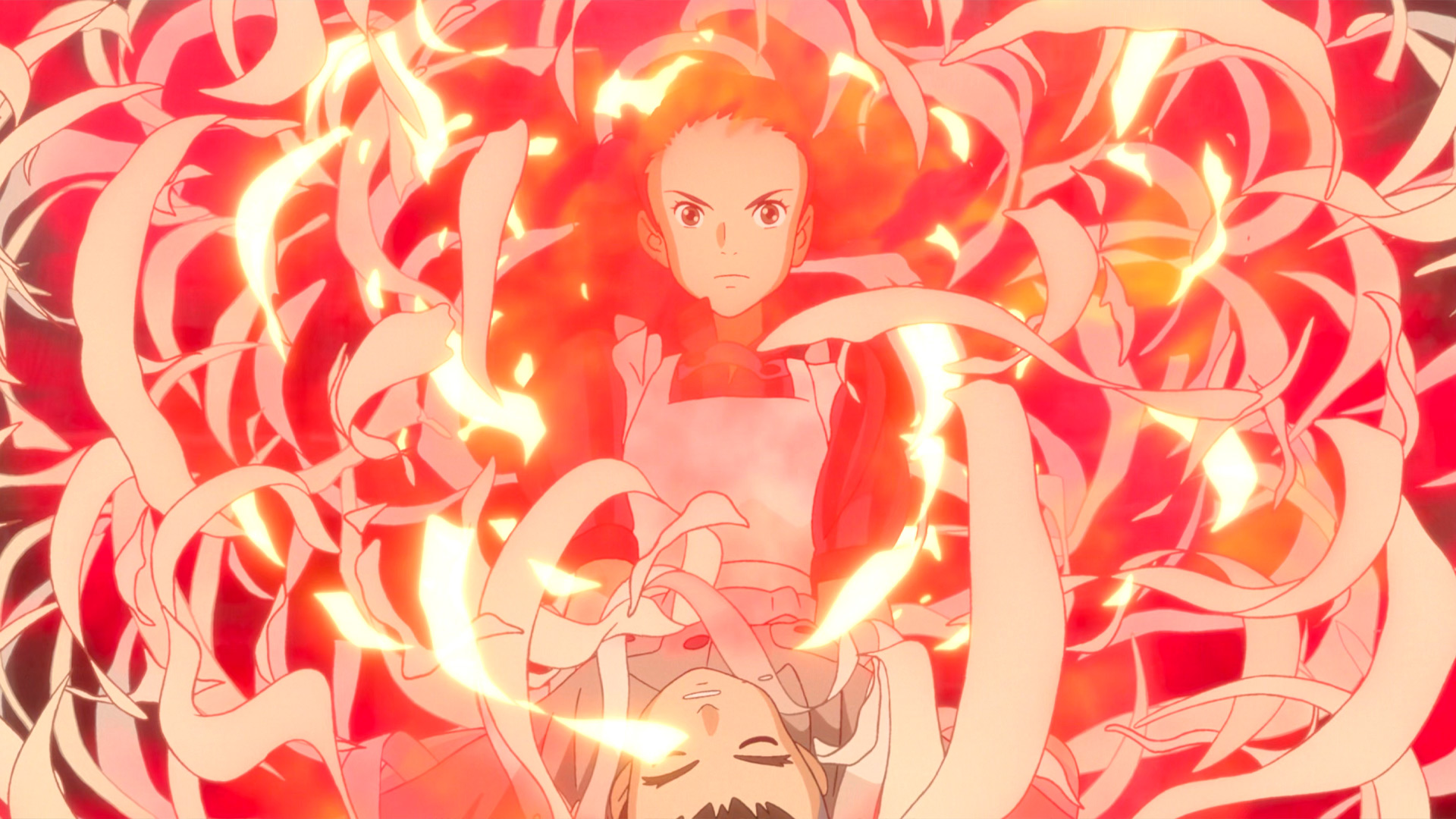
The film runs almost 2 hours, but it feels like it’s 30 minutes longer than it should be. It’s like diving into a strange fantasy world, but for the first 45 minutes, I have no idea where the film is going, where it will lead, or what I should anticipate next. The narrative doesn’t seem to move forward at all. In this film, a lot of things happen without any explanation. Scenes appear because they look nice on screen, but then the next scene contradicts itself, revealing the previous scene might be just a vision or a delusion.
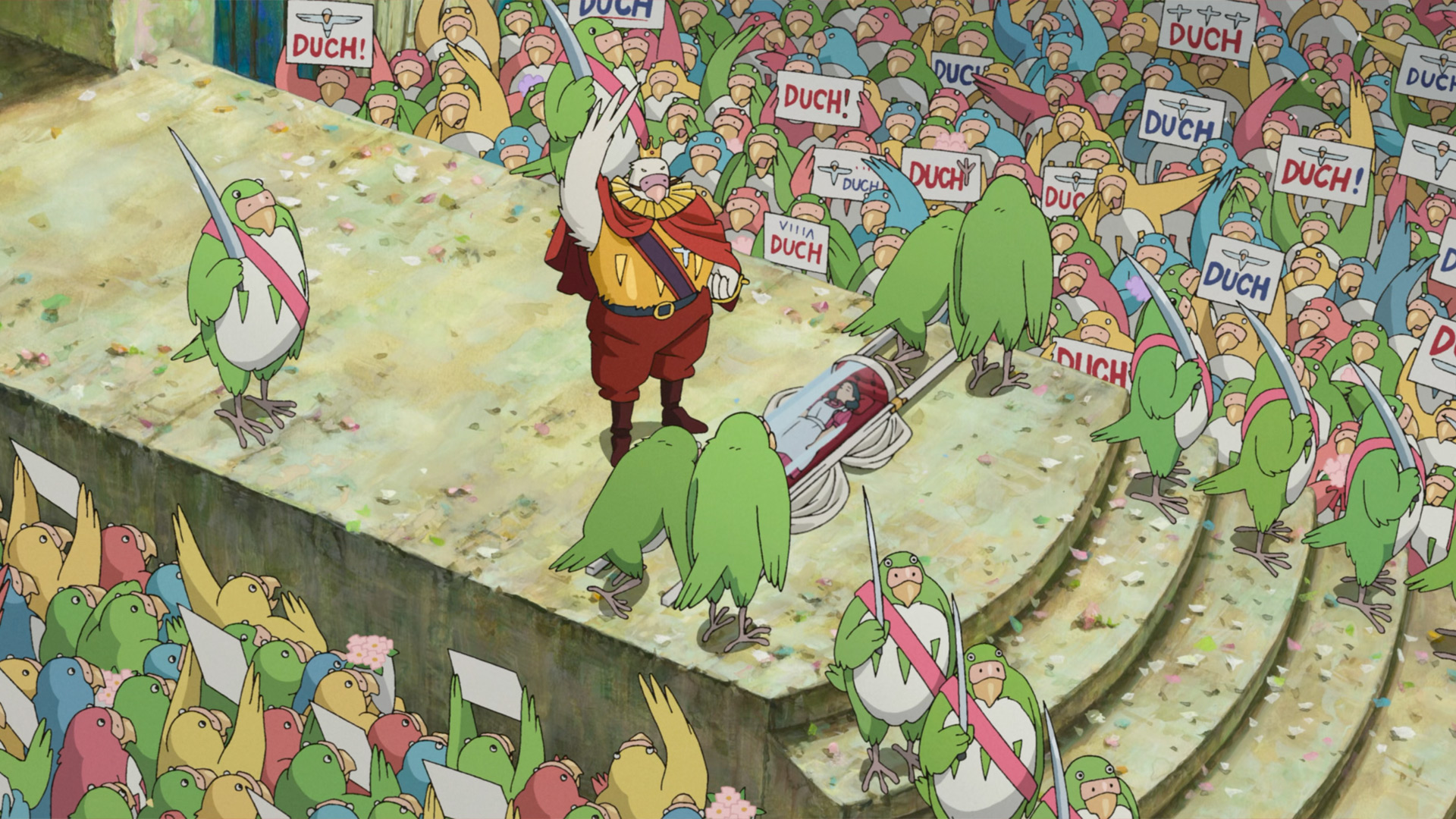
In my opinion, the Master of the Tower represents the current state of Hayao Miyazaki, the wise and powerful filmmaker who has created and maintained the balance of this fantastical oceanic world. Initially, the world would have been beautiful and wondrous as the Master envisioned it (although the film never shows us). In recent times, as the Master of the Tower has grown old and weakened, this world has fallen into chaos, plagued with malicious creatures like pelicans and budgerigars. The Master desperately needs to find his successor before his world crumbles into oblivion. The crucial condition is that his successor must be of his own bloodline.
Budgerigars (セキセイインコ), also known as parakeets or “budgies”, are small, long-tailed, seed-eating parrots that are native to Australia. In the wild, they have a light green body color with black, yellow, and white markings. They are social birds that live in flocks in the wild. Budgerigars are known for their ability to mimic human speech, with males generally being better at it than females. They can learn dozens of words.
In a sense, the boy represents Miyazaki’s son, Goro (宮崎吾朗). However, the real-life relationship between Hayao and Goro seems complicated. Perhaps Miyazaki believes his son isn’t quite ready to take control of the world he created, the legacy of Studio Ghibli. It could also be that Goro’s heart lies elsewhere, wanting to forge his own path, having shouldered the immense pressure to live up to his father’s legacy.
The boy could also partly represent Hayao Miyazaki’s childhood experience growing up during World War II. This is further supported by the fact that Hisako and Koriko appear in both their younger and adult versions in the film. This adds another layer of complexity and confusion to the story’s timeline.
While the film’s conclusion isn’t entirely unexpected (and I won’t spoil it here), it’s admirable that the boy is presented with choices that could change his life’s course. However, the execution feels underwhelmed, especially considering it plays out partly as a coming-of-age story. For me, this isn’t a kind of film from Studio Ghibli that I would consider picking up for a second watch, no matter how amazing its visuals are.
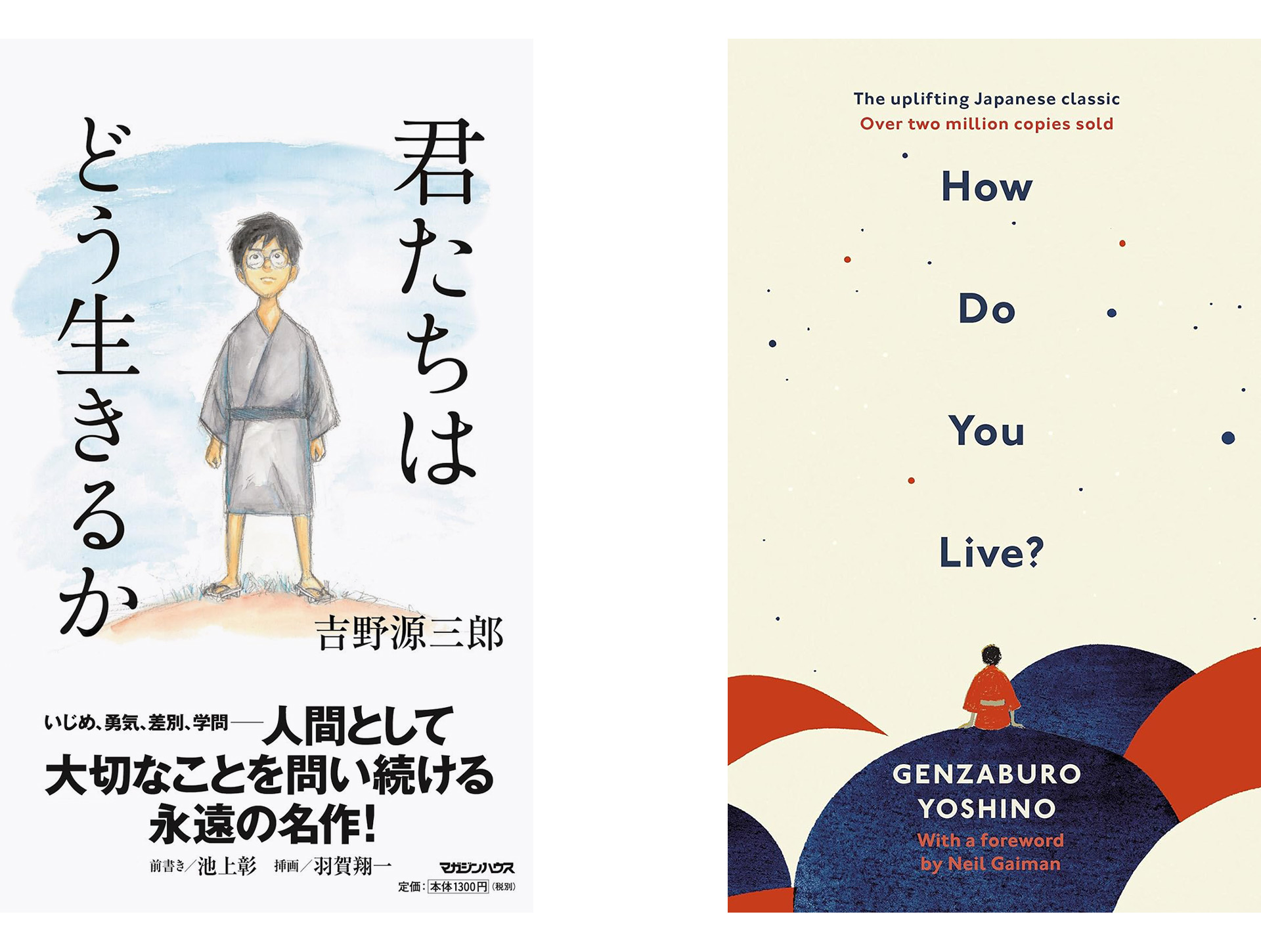
Although the film’s Japanese title shares the same name as the 1937 novel by Japanese author Genzaburo Yoshino (吉野源三郎), it is not a direct adaptation. However, they do share some similarities, such as a young male protagonist grappling with existential questions and the struggles of growing up.
君たちはどう生きるか is considered a classic work of Japanese literature and has remained an essential part of the Japanese classical arts curriculum. The book was originally published in 1937 as part of a series intended to convey progressive ideas to Japanese schoolchildren. However, it was seen as containing anti-authoritarian and anti-capitalist themes. As Japan became increasingly militaristic and authoritarian in the 1930s, the government’s Special Higher Police (特別高等警察) became concerned about the book’s content. By 1942, the Special Higher Police had caught on to the subversive nature of the novel and removed it from circulation, banning it during the war years. When the book was republished in 1945 after the war, it had been washed clean of any references to imperialism, criticism of capitalism, and issues of class that were present in the original 1937 version. The first English translation of Genzaburo Yoshino’s novel “How Do You Live?” (君たちはどう生きるか) was published in 2021, making it widely available to English-language readers for the first time in 84 years.

This film is also influenced by the 2016 novel The Book of Lost Things by Irish author John Connolly. Both works share some thematic similarities: a boy protagonist consumed by grief after his mother’s death and struggling to adjust to his father’s new relationship. They both also hear their mothers’ voices, drawing them into an alternate, fairy tale-inspired world filled with a variety of twisted and frightening versions of classic fairy tale characters and creatures.
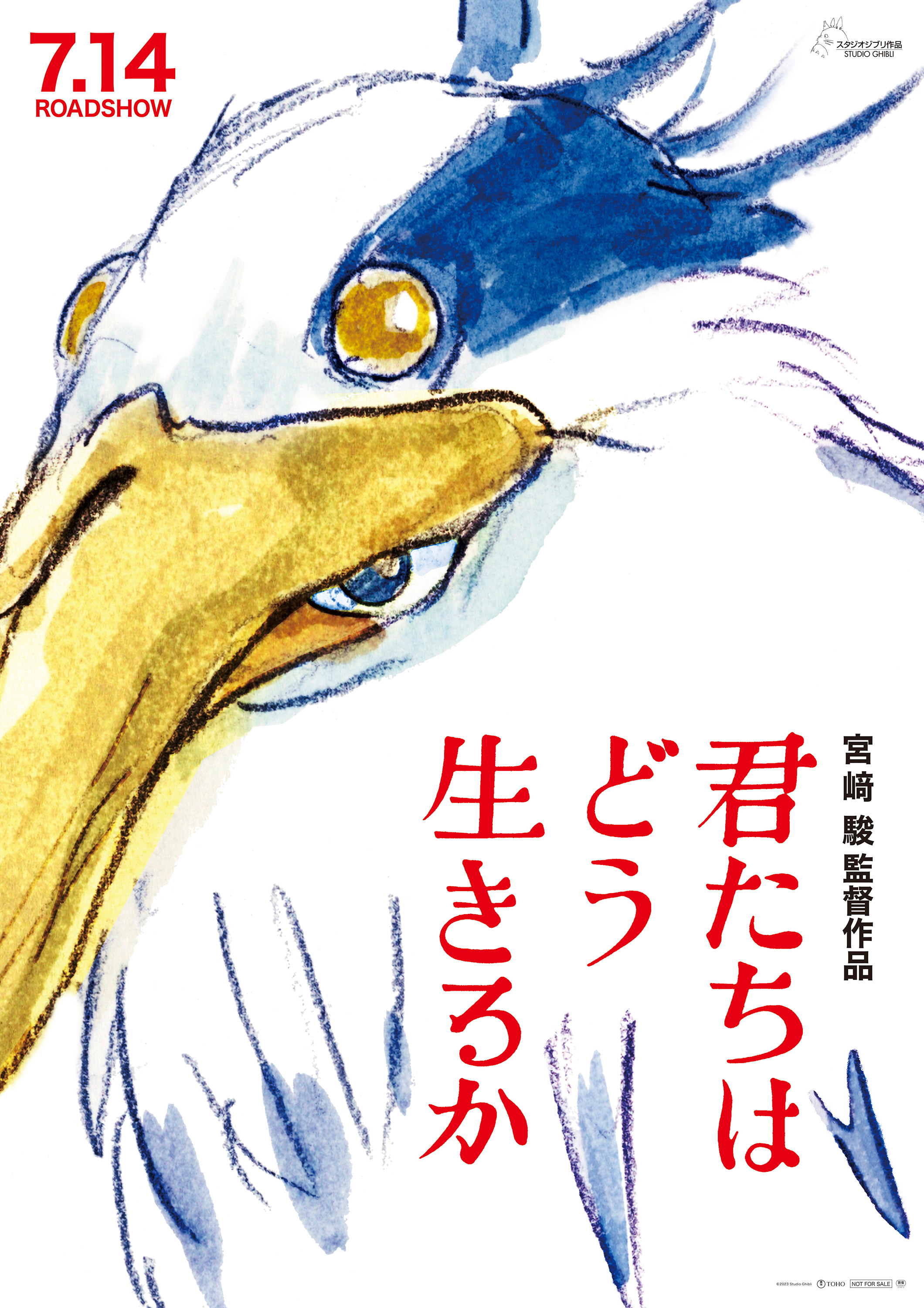
君たちはどう生きるか (How Do You Live?) also known as The BOY and the HERON, was theatrically released in Japan on 14 July 2023. It also won BAFTA Award for Best Animated Film, the Golden Globe Award for Best Animated Feature Film, and the Academy Award for Best Animated Feature.
Studio Ghibli took an unprecedented approach with this film by deciding not to release any trailers, TV commercials, newspaper ads, or other promotional materials before its theatrical release in Japan. This decision was explained by Studio Ghibli’s president Toshio Suzuki (鈴木敏夫), who stated that they wanted to do the opposite of typical Hollywood marketing strategies, which often reveal too much of a movie’s content through multiple trailers. The film was released in Japan with only a single poster as promotional material, relying on Miyazaki’s and Studio Ghibli’s reputation to draw audiences.

